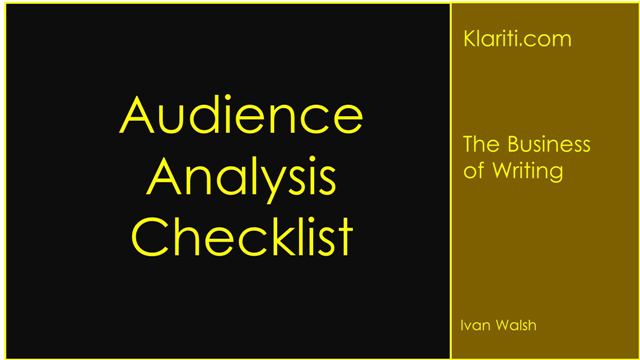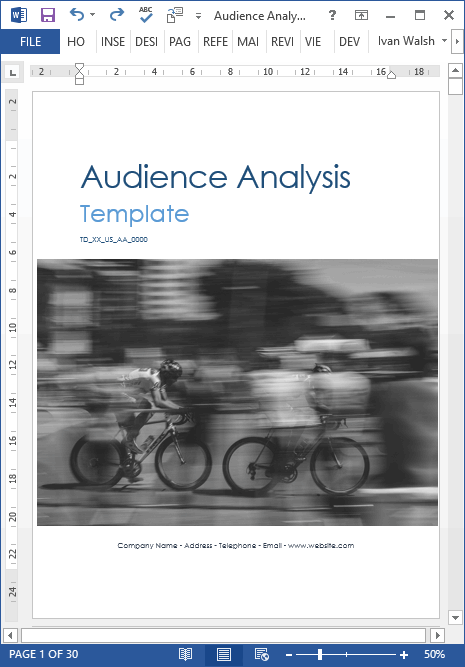Marketing Plan
Audience Analysis Checklist For Marketing Plans
Summary: Audience Analysis is the foundation of your marketing plan. Use it to crystallize what you know about prospective customers so you can reduce the guesswork and start building products and services real customers will pay for.
Audience Analysis Checklist
If you’re looking for ways to improve your audience analysis and conduct better market research, use this checklist to learn more about your customers, or, at least, those you believe ‘could’ be your customers.
Let’s start with marketing plans. After all, Audience Analysis is a subset of your marketing strategy.
When developing marketing plans, it is critical that you understand your target audience.
As a marketing writer, if you overlook this step, you’re unlikely to learn very much about your potential customers. The clue is in the word potential. After all, these are people you hope to convert.
They’re not fully paying customers yet, right?
So, how do we learn what makes them tick?
Instant Download – Only $9.99!
[Learn more about the Audience Analysis Template here]
Audience Analysis: Writing Strategies
To engage with prospective customers, you need to write:
- At their level
- With their interests at heart
- About issues that evoke something, for example, a strong opinion or reaction
- Create an immediate response, so they follow up on the reaction before they head off to the next site.
Audience Analysis: 5 Ways to Improve Your Writing
You can avoid this by using appropriate context, tone, and language suitable to your target audience.
To adapt your writing to a specific audience, focus on the following four areas:
What’s the message?
In one sentence, what is the message you want them to remember?
- Have you defined what your readers really care about?
- What will make them take action?
- Can they state what you do in one sentence?
Can you?
Ask yourself right now: what does my business stand for? Can you answer this in one simple sentence?
If not, go back to your communication plan.
Is there an argument? If not, why?
This means why should they buy from you and not someone else? What makes your business so compelling to others? Price, product range, service, green, fair trade? Stuck? Think of your favourite brand and ask the same questions. Still stuck? Go to Etsy. Look at the best Etsy site you can find. What makes it stand out? Now, how can you capture this in your sales and marketing content?
Develop your own voice
Look very, very carefully at how great business writers write. Notice how they tend to avoid jargon, clichés, and other types of lazy copy-cat writing styles? Here’s a tip. When they do use clichés, they put their own twist on it. See if you can do the same. It mightn’t work the first time. Don’t worry. Every time you try, you get closer to your own personal writing style. In the end you find your own voice. It’s worth the effort.
Mix and Match Sentence Lengths
Your writing style plays a key role in developing a successful marketing plan. Decide where and how you use fragments, complex patterns, short ones, or a combination?
How to avoid Tone Deaf Writing
If you want to know what your writing sounds like, ask someone to read it back to you.
Sound good?
Sound funny?
Sound pretentious?
Here’s how to get it right, especially if you’re writing for the web.
Write as though you are
- talking to a friend,
- in a hurry,
- but want to get the exact message across and
- they don’t have to read it twice
- On the web, we scan text. Make it scannable.
Summary
There is no short-cut to being a good business writer. That’s the good news. Why? Because it means if you apply yourself, you’ll begin to stand out, find clients, and generate a nice business. What’s not to like about that?



